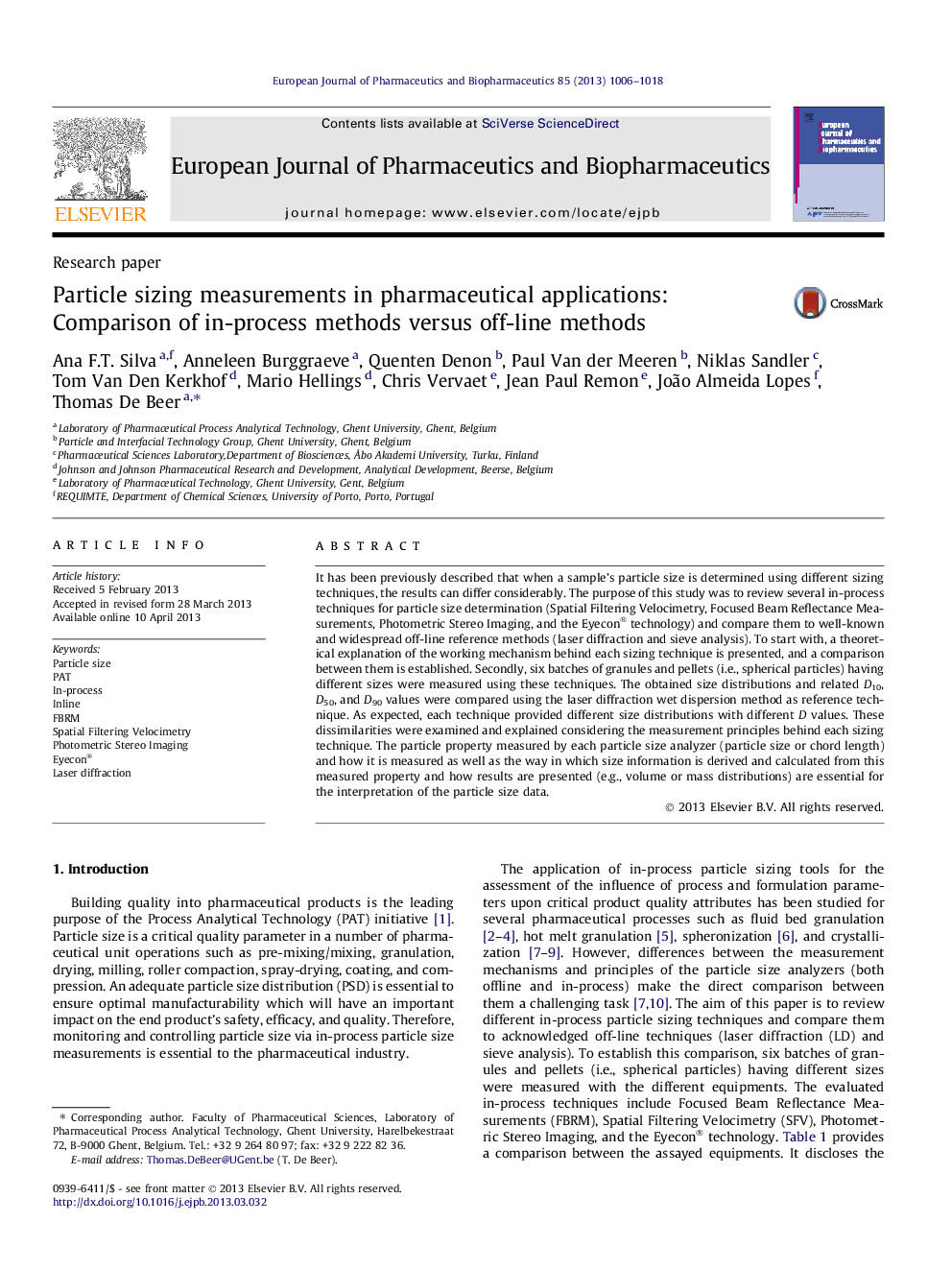| Article ID | Journal | Published Year | Pages | File Type |
|---|---|---|---|---|
| 8414361 | European Journal of Pharmaceutics and Biopharmaceutics | 2013 | 13 Pages |
Abstract
It has been previously described that when a sample's particle size is determined using different sizing techniques, the results can differ considerably. The purpose of this study was to review several in-process techniques for particle size determination (Spatial Filtering Velocimetry, Focused Beam Reflectance Measurements, Photometric Stereo Imaging, and the Eyecon® technology) and compare them to well-known and widespread off-line reference methods (laser diffraction and sieve analysis). To start with, a theoretical explanation of the working mechanism behind each sizing technique is presented, and a comparison between them is established. Secondly, six batches of granules and pellets (i.e., spherical particles) having different sizes were measured using these techniques. The obtained size distributions and related D10, D50, and D90 values were compared using the laser diffraction wet dispersion method as reference technique. As expected, each technique provided different size distributions with different D values. These dissimilarities were examined and explained considering the measurement principles behind each sizing technique. The particle property measured by each particle size analyzer (particle size or chord length) and how it is measured as well as the way in which size information is derived and calculated from this measured property and how results are presented (e.g., volume or mass distributions) are essential for the interpretation of the particle size data.
Related Topics
Life Sciences
Biochemistry, Genetics and Molecular Biology
Biotechnology
Authors
Ana F.T. Silva, Anneleen Burggraeve, Quenten Denon, Paul Van der Meeren, Niklas Sandler, Tom Van Den Kerkhof, Mario Hellings, Chris Vervaet, Jean Paul Remon, João Almeida Lopes, Thomas De Beer,
